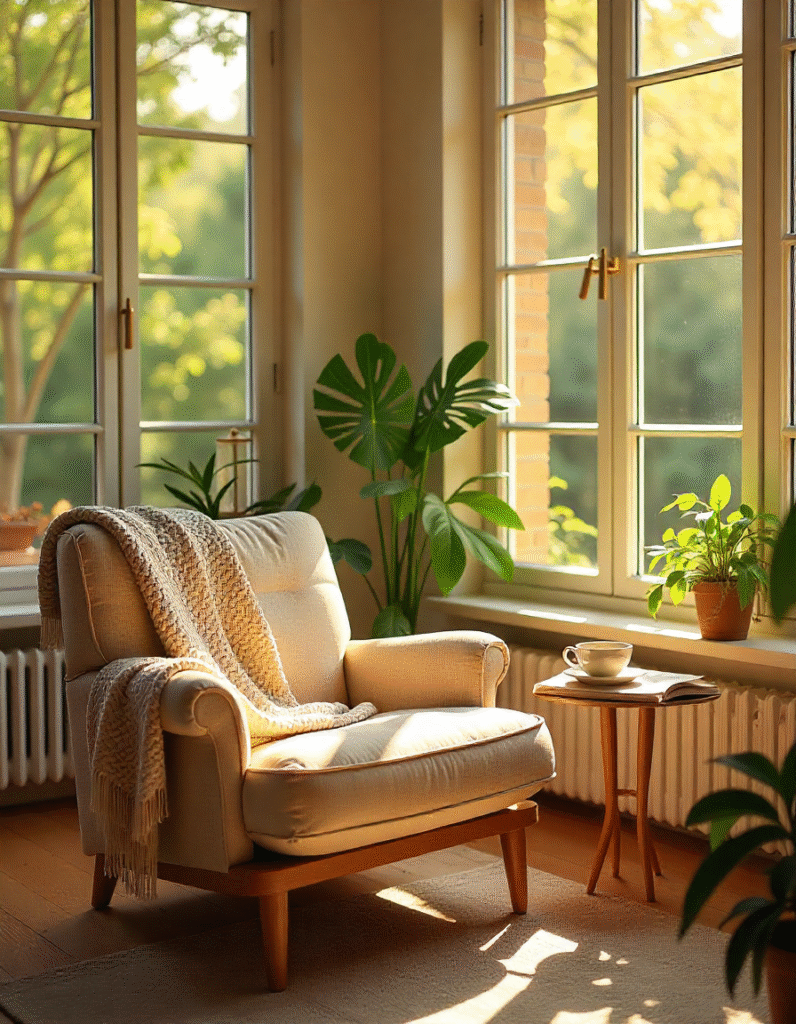Not so long ago, the measure of a good day seemed tied to how much we could pack into it. Meetings, errands, social commitments — the fuller the schedule, the more successful we felt. But as more people question whether constant motion equals happiness, a quieter countercurrent has emerged: slow living.
Slow living isn’t about rejecting ambition or isolating yourself from the world. It’s about making deliberate choices that align with your values, rather than getting pulled along by the pace of everything around you.
1. The Myth of “More”
Many of us have been taught that more is always better — more work, more possessions, more connections. The trouble is, “more” rarely comes with a built-in limit. Without pausing to ask why we want it, we risk collecting obligations and objects that drain more than they give.
Slow living encourages a different question: What is enough? The answer looks different for everyone, but simply asking it can shift priorities.
2. Creating Breathing Space in the Day
We tend to think of rest as something we do only after the work is done. But if we wait for a perfect gap in the schedule, it rarely arrives. Instead, try structuring your day to include intentional pauses:
-
A ten-minute walk after lunch.
-
Preparing tea without simultaneously scrolling on your phone.
-
Sitting quietly before bed instead of rushing through a checklist.
These moments aren’t wasted time — they help reset the mind, making the rest of the day flow more smoothly.
3. The Role of Environment
Where you spend your time shapes how you feel. A cluttered space can make it harder to slow down, even if your calendar is clear. This doesn’t mean every home needs to look like a minimalist showroom.
Instead, think about which areas cause you low-level stress. Maybe it’s the overflowing kitchen counter or the desk piled high with unopened mail. Choosing one small spot to clear can have a surprising ripple effect.
4. Mindful Consumption
Slow living extends to the way we buy and use things. It’s not about deprivation but about intention.
Instead of shopping to fill boredom or chase trends, consider purchases through a few guiding questions:
-
Will I still value this a year from now?
-
Does it solve a real need?
-
Could I borrow, rent, or repair instead?
Not only does this reduce waste, but it also helps create a sense of satisfaction with what you already own.
5. Relationships at the Right Pace
In a hyper-connected world, it’s easy to mistake quantity of interaction for quality. We might rack up dozens of quick exchanges without ever feeling truly seen.
Slow living values fewer but deeper connections. This might mean making the effort for an unhurried dinner with a friend instead of just sending a text, or truly listening during a conversation without thinking ahead to your response.
6. Rethinking Productivity
Productivity is often measured by output, but a sustainable approach looks at impact. Doing fewer things well often brings more satisfaction than doing many things halfway.
This could mean declining a project that doesn’t align with your goals, or spreading tasks over several days to avoid burnout. The goal isn’t laziness — it’s to give important work the attention it deserves.
7. Bringing Slow Living Into Work Life
You don’t need to quit your job to live more slowly. You can:
-
Take real lunch breaks away from your desk.
-
Set boundaries around after-hours communication.
-
Prioritize the most meaningful tasks over endless busywork.
These small shifts can reduce the sense that work consumes everything, leaving room for personal life to breathe.
8. The Seasonal Mindset
Nature operates in cycles — planting, growth, harvest, rest. Humans, however, often try to stay in perpetual “growth” mode. Recognizing your own seasons can make life more balanced.
There may be weeks when you take on big projects and push your limits, followed by times of quieter maintenance. Giving yourself permission for both can prevent the burnout that comes from endless acceleration.
9. Practical Starting Points
If slow living feels like a huge lifestyle overhaul, start small:
-
Pick one evening a week with no plans.
-
Declutter a single drawer.
-
Eat one meal a day without screens.
-
Try a short daily ritual, like lighting a candle before reading.
Over time, these simple habits build into a way of life that feels calmer and more deliberate.
10. Why It Matters Now More Than Ever
The modern pace isn’t slowing on its own. Technology ensures that work, entertainment, and social life can reach us anywhere, anytime. Without intentional boundaries, the days can blur into a cycle of reaction instead of choice.
Slow living doesn’t ignore the demands of reality — bills still need paying, deadlines still exist. But it offers a framework for meeting those demands without letting them dictate every moment.
Final Thought
Living slowly isn’t about how much you do; it’s about how much you notice. When we stop measuring success solely by speed or volume, we give ourselves the chance to experience life as it’s happening — not just as another item to cross off the list.
It’s not a retreat from the world. It’s a way to meet it more fully, with enough space to breathe.




















